
Shrubs Around Las Vegas, Vegetation Around Las Vegas
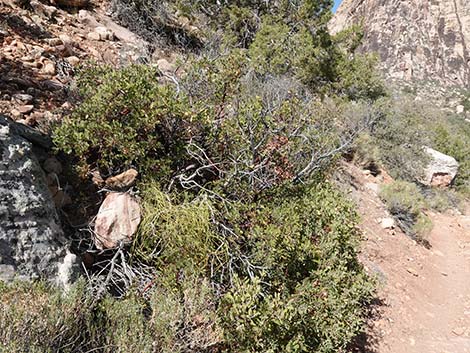 Pointleaf Manzanita on a hillside |
General: Pointleaf Manzanita (Arctostaphylos pungens) usually is a knee- to thigh-high spreading shrub, with stiff branches, bright red bark, and bright-green oval leaves that often are held upright and orientated vertically. Manzanita usually forms dense thickets on hillsides. The flowers are small and obscure, but the little red fruits are obvious and resemble little apples. There are five species of manzanita in Nevada, but only one in Red Rock Canyon NCA and the Spring Mountains. In these plants, the stems and fruits are hairless or nearly so. Pointleaf Manzanita is a common component of middle- and higher-elevation shrub and tree communities on open slopes and rocky hillsides in the Upper Sonoran (Mojave Desert Scrub and Pinyon-Juniper Woodland), Transition (Yellow Pine Forest), and Canadian (Pine-Fir Forest) life zones. Family: Heath (Ericaceae). Other Names: The name "manzanita" is Spanish for little apple, and the genus name, Arctostaphylos, is Greek for bear berries, both of which refer to the fruits. |
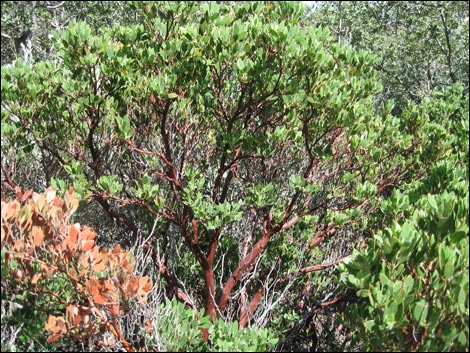 |
Plant Form: Spreading perennial shrub, generally circular in shape, usually to 6-feet across and 3-feet high. Forms low, dense thickets. Height: Usually to about 3 feet at lower elevations, but only to the average minimum snow depth at higher elevations (snow covers and protects stem tips from the bitter winds and cold of winter). Bark: red, peeling. Stems: Stout; some erect, others spreading; emerge from fire-resistant burl at the base. Stems hairless or nearly so. |
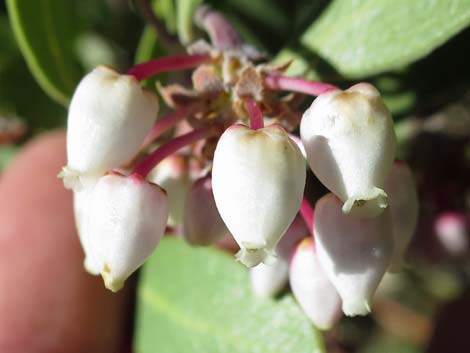 |
Leaves: Oval, bright green, shiny, and smooth. Petiole 1/4 to 1/2 inch; leaf blade 1-2 inches long. Leaves alternate, evergreen; blade surfaces alike; margin entire and flat. Fresh leaves may have short hairs, but mature leaves are hairless or nearly so. Hairs are not sticky glandular. Flowers: Inflorescence open. Flower urn-shaped with a small, 5-lobed corolla, white to pink. Fruit: Fruits resembles a little apple to 1/3-inch diameter; green, ripening to red. Hairless or nearly so. Seeds: Six nutlets not fused along the central axis. |
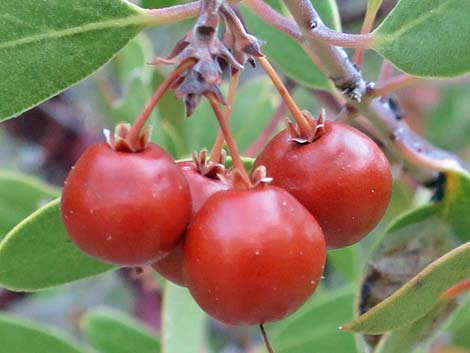 Little Apples, or "manzanita" in Spanish |
Habitat: Dry, well-drained sandy, gravelly, and rocky soils from the upper-most bajadas into the higher mountains. Open rocky places in forests. Elevation: 2,500 to 11,000 feet. Distribution: Various species throughout the western and northern U.S., mostly in California; about five species in Nevada. Comments: Manzanita is a fire-resistant species that grows where fires are frequent. The leaves and stems burn hot and fast, but the root mass (burl) survives to produce new stems. |
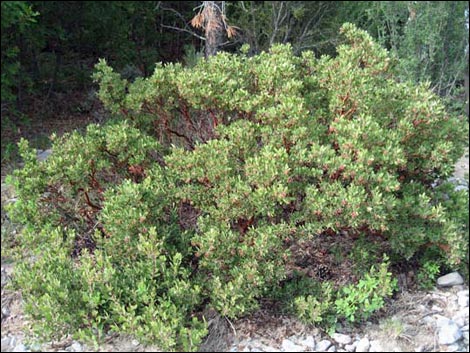 |
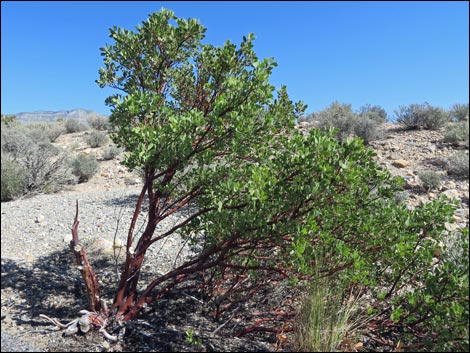 |
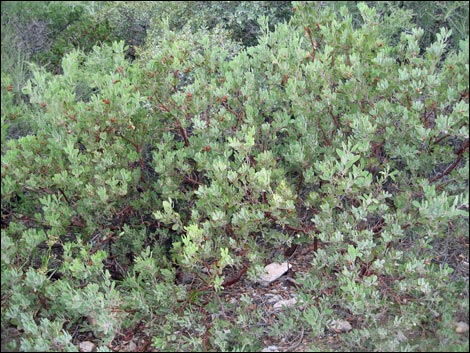 |
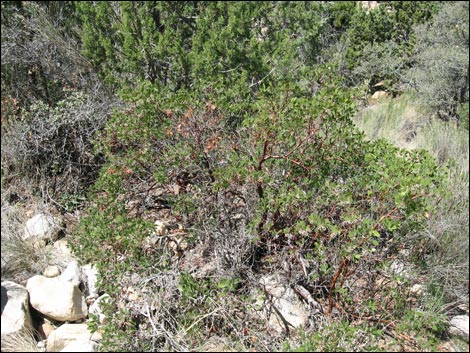 |
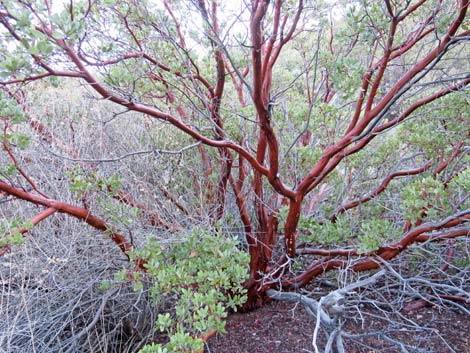 |
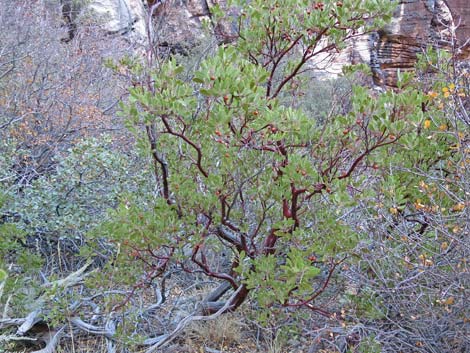 |
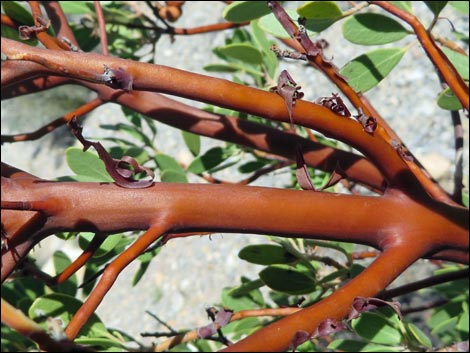 |
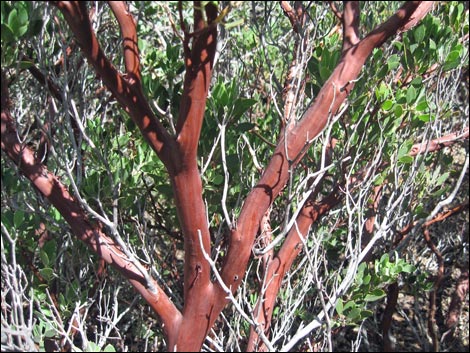 |
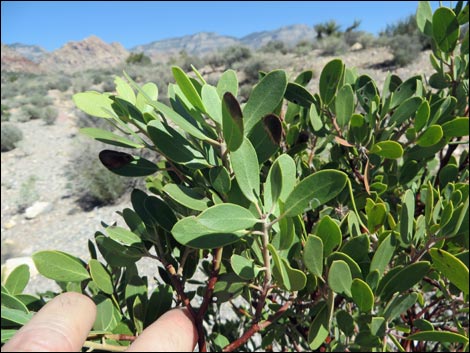 |
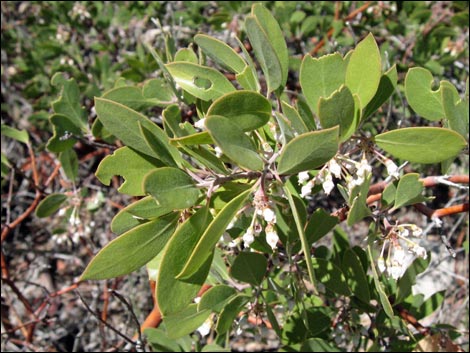 |
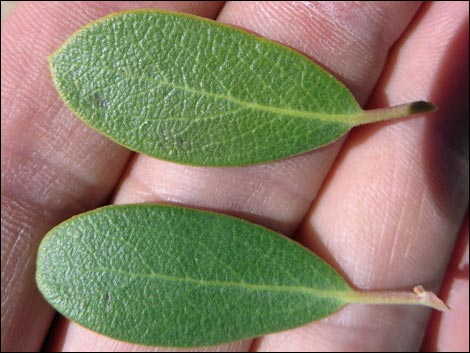 |
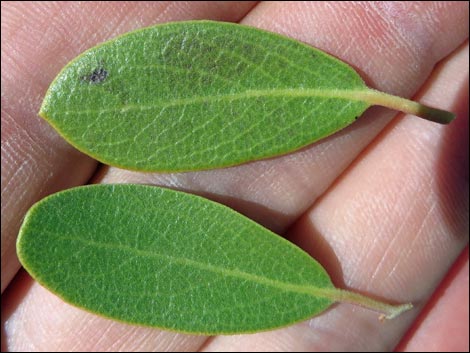 |
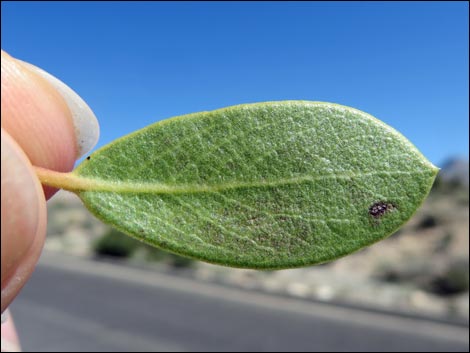 |
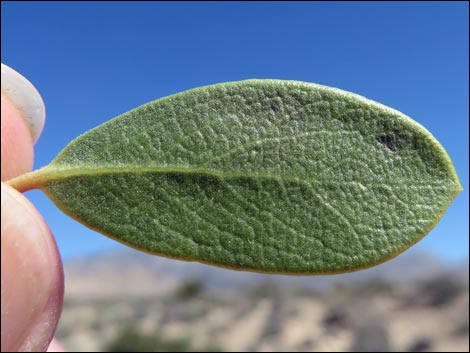 |
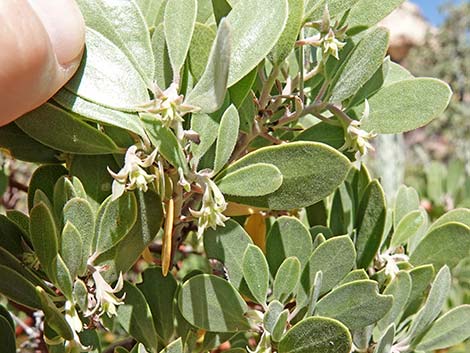 Flower structures beginning to develop |
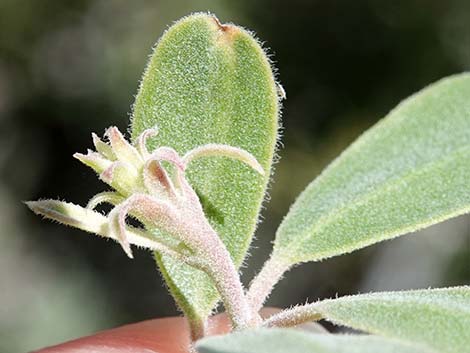 Flower structures beginning to develop |
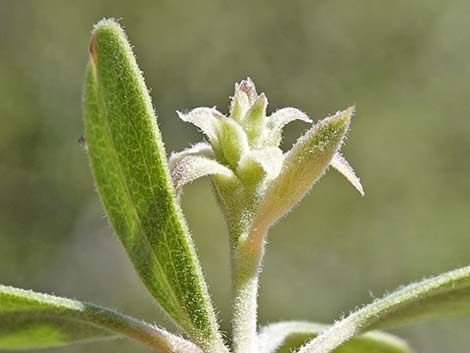 Flower structures beginning to develop |
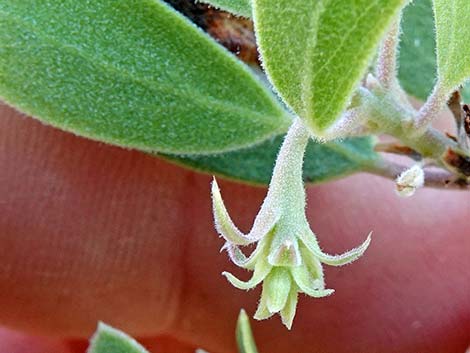 Flower structures beginning to develop |
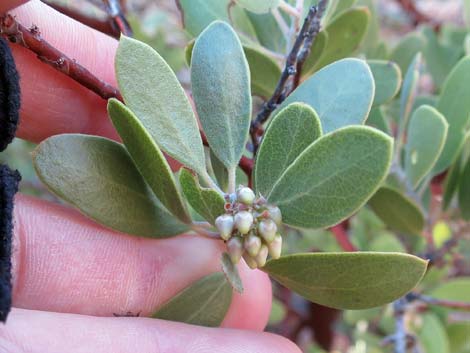 Flower buds |
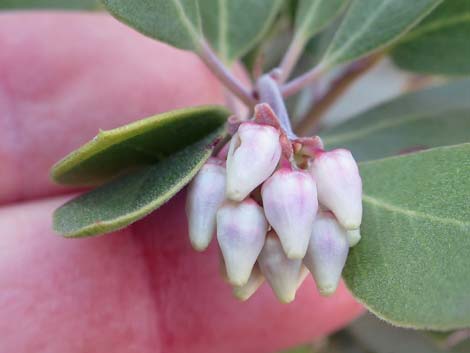 Flower buds |
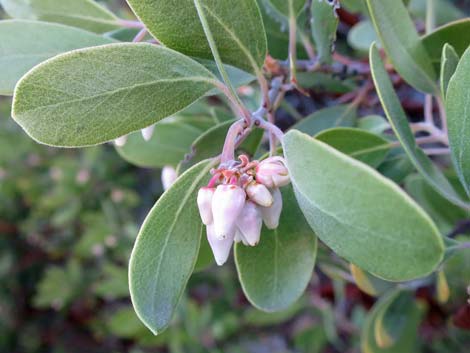 Flower buds |
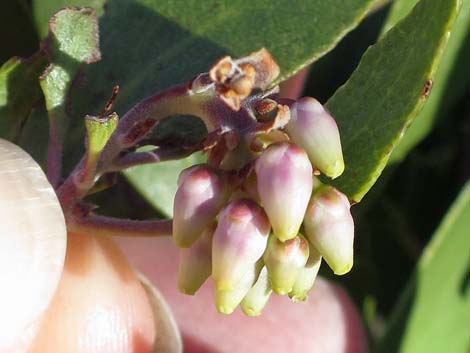 Flower buds |
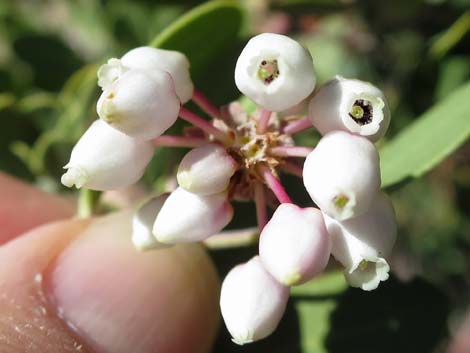 |
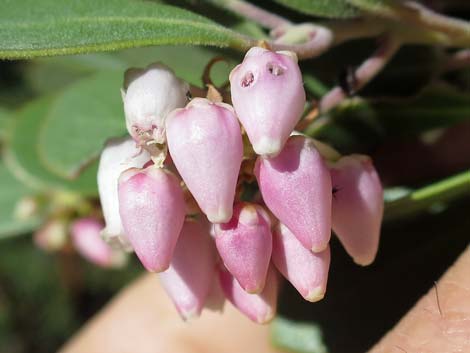 |
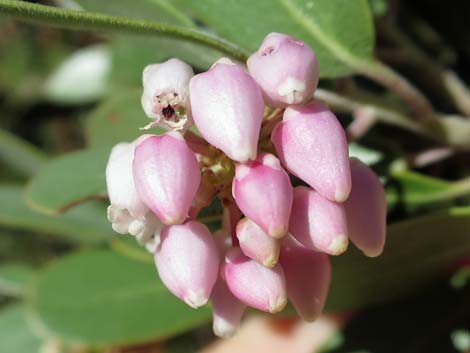 |
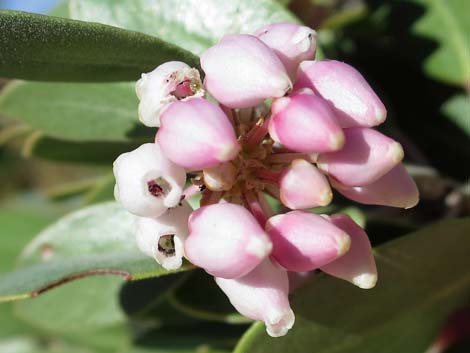 |
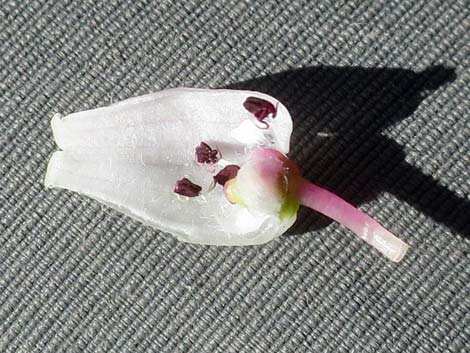 Inside urn-shaped flower |
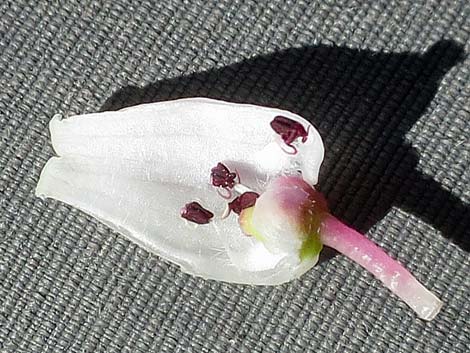 Inside urn-shaped flower |
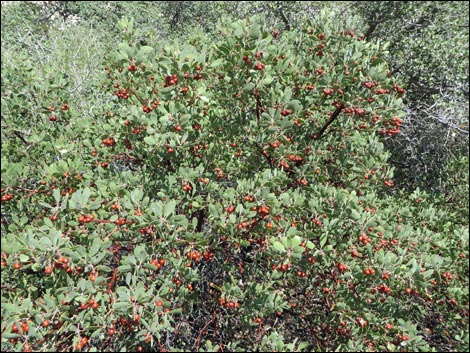 Pointleaf Manzanita with fruits |
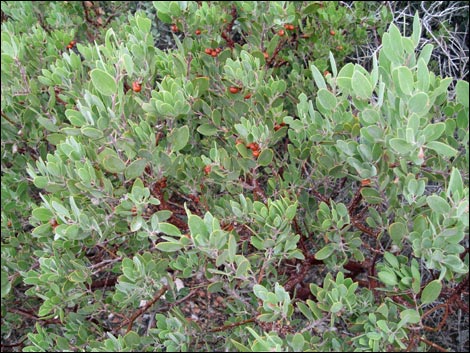 Pointleaf Manzanita with fruits |
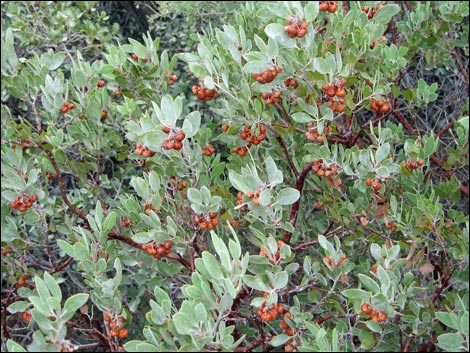 |
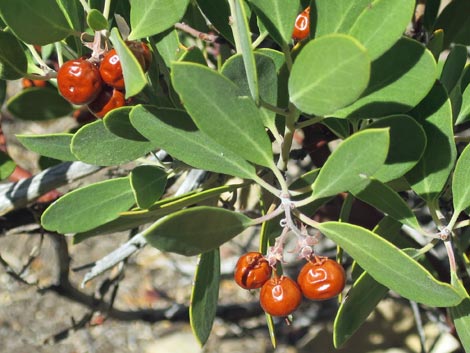 |
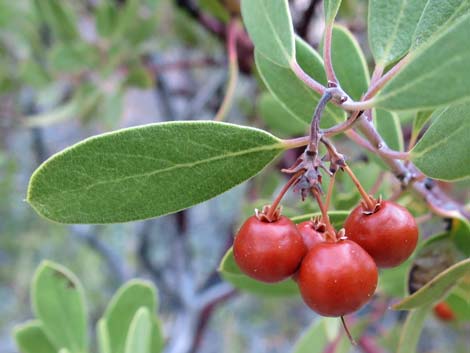 Pointleaf Manzanita fruits |
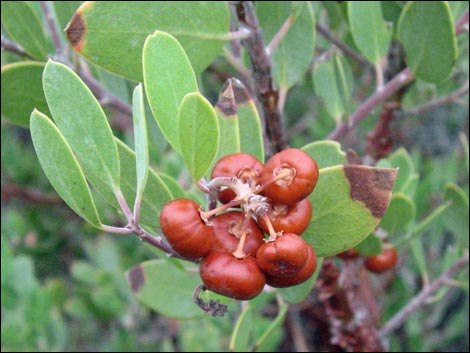 Pointleaf Manzanita fruits |
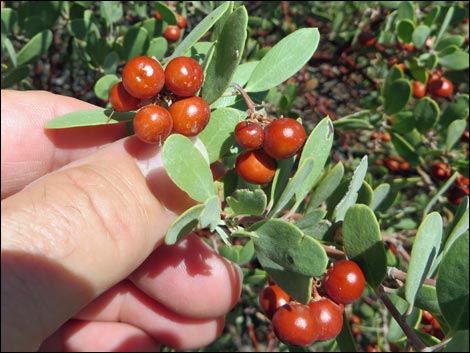 |
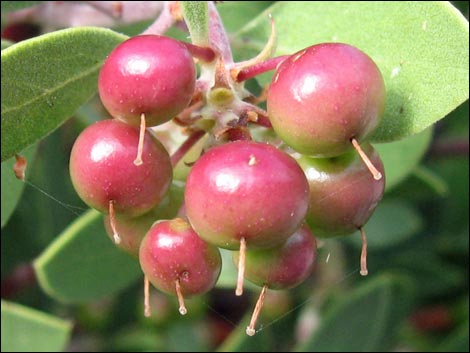 |
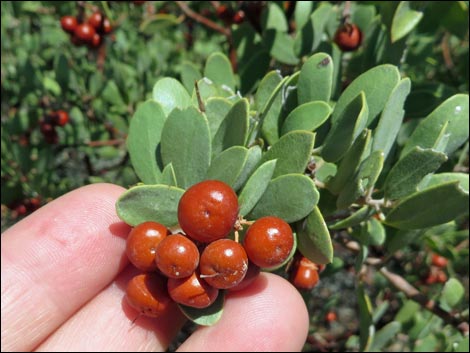 |
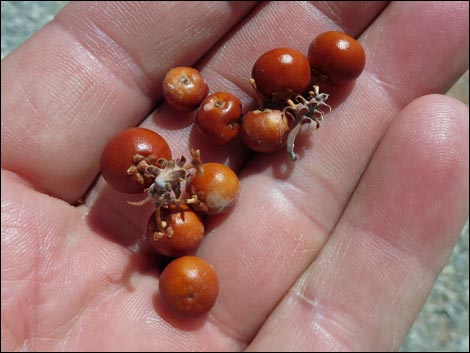 |
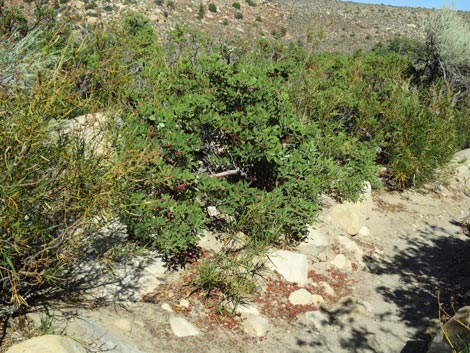 Pointleaf Manzanita with many berries on the ground |
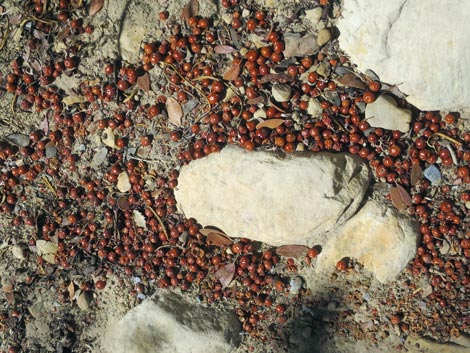 Many Pointleaf Manzanita berries on the ground |
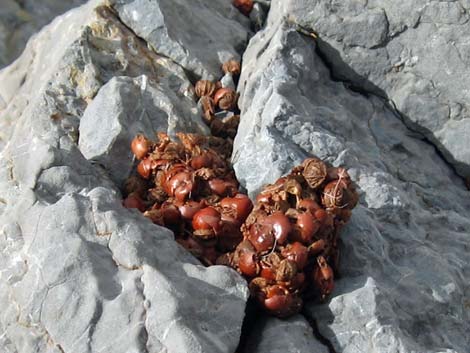 Pointleaf Manzanita berries in coyote scat |
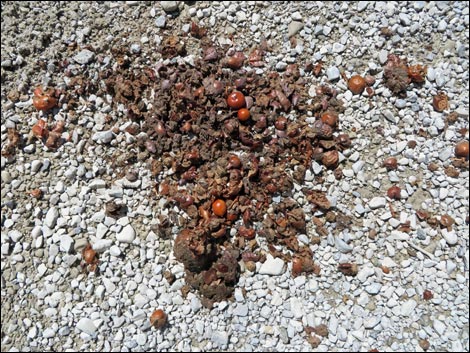 Pointleaf Manzanita berries in coyote scat |
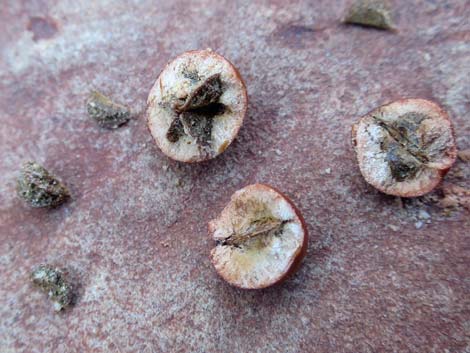 Pointleaf Manzanita berries opened |
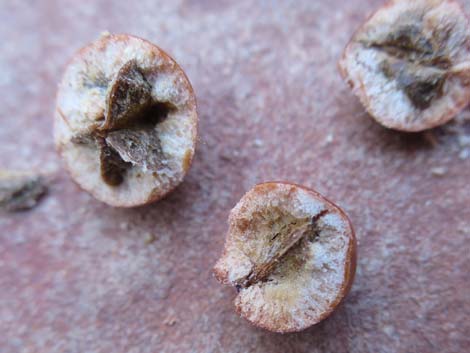 Pointleaf Manzanita berries opened |
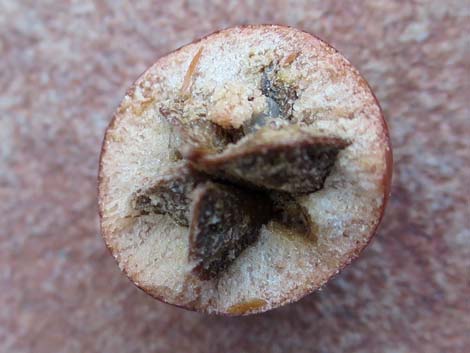 Pointleaf Manzanita berry opened |
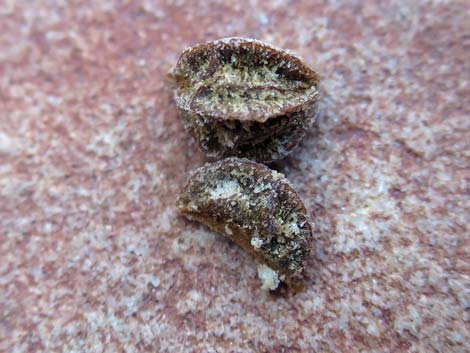 Pointleaf Manzanita individual seeds |
Note: All distances, elevations, and other facts are approximate. Names generally follow the USDA database.
![]() ; Last updated 240912
; Last updated 240912
| All Shrubs | Plant Species Index | Glossary | Copyright, Conditions, Disclaimer | Home |